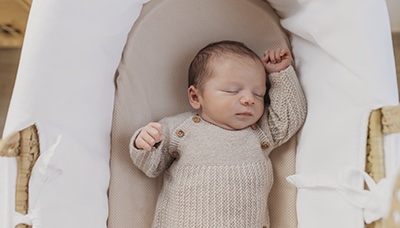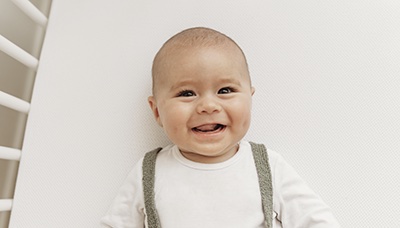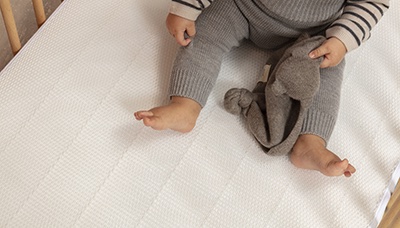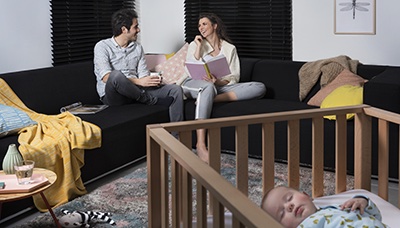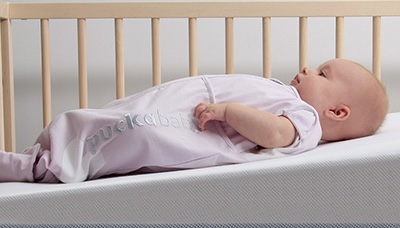Guest blog by sleep expert Lise Dullaerts from @debabyslaapcoach
When a baby is on the way, many expectant parents wonder where their little one will sleep - in the same room or perhaps even in the same bed. Once the baby becomes a toddler or pre-schooler who suddenly struggles to fall asleep or does not want to go to bed, parents often wonder when it's time to graduate to their own space.
In this blog, we will take a closer look at co-sleeping.
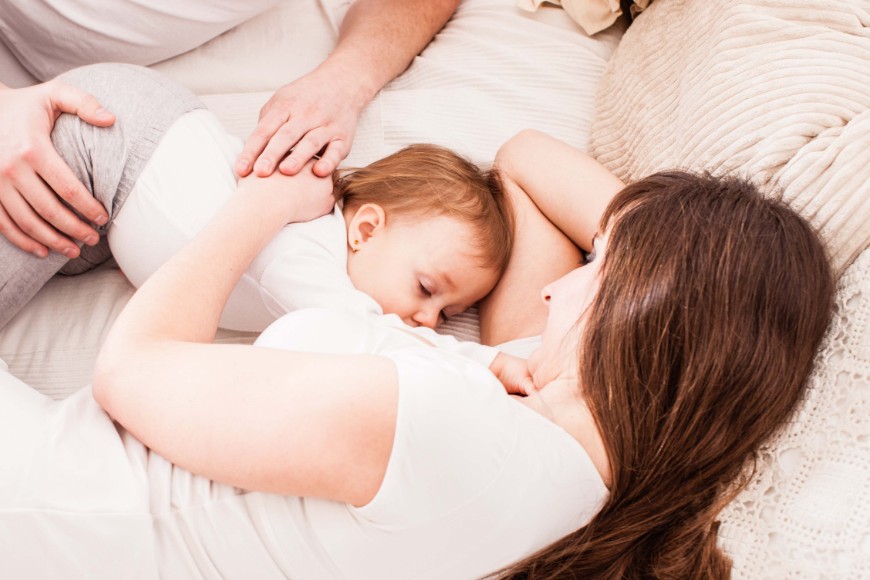

What is Co-Sleeping?
When returning home from the hospital with a newborn baby, parents often find that they enjoy sleeping close to their little ones. Co-sleeping is the term used to describe a shared sleeping space between parents and their infant. It involves sleeping close together, such as in the same bed or in a co-sleeper, allowing physical contact and close supervision during sleep.
Various co-sleeping options
However, it is important to note that sharing a bed also poses potential risks. Safety measures should be taken to minimise the risk of suffocation.
A few guidelines (Professor James J. McKenna)
- Bed sharing is only recommended for nursing mothers. Due to breastfeeding hormones, the mother is more alert and sleeping behaviour will adapt to that of the baby. A sleeping infant also instinctively responds differently to a breastfeeding mother. If you are not breastfeeding your baby, co-sleeping is a safer option.
- Sharing a bed is inadvisable in situations involving smoking, alcohol consumption, narcotics, medications that reduce alertness, illness and severe fatigue. These factors reduce the mother's responsiveness.
- Co-sleeping is also inadvisable if the mother is severely overweight.
- A firm mattress is essential and there must be no crevices that the baby can slip between. Do not use a comforter and ensure that your little one cannot lay against a pillow (also do not use a nursing pillow to prevent the baby from rolling out of the bed).
- Long hair must be tied back or braided. The child can get tangled in loose hair.
- Your partner must also be made aware that the little one is in the bed. The safest place for a child is next to the breastfeeding mother, not in the middle.
- Use a baby-safe bed guard so that your little one cannot roll off the bed.
- The mother sleeps on her side, with her knees raised and an arm under her head between the child and the pillow. The child lies on their back between the legs and the arm, with the head at chest level. This is known as the maternal position.
- Do not leave your child sleeping alone in the big bed as there is always a risk of them falling out. Even a baby of a few minutes old can move themselves around.
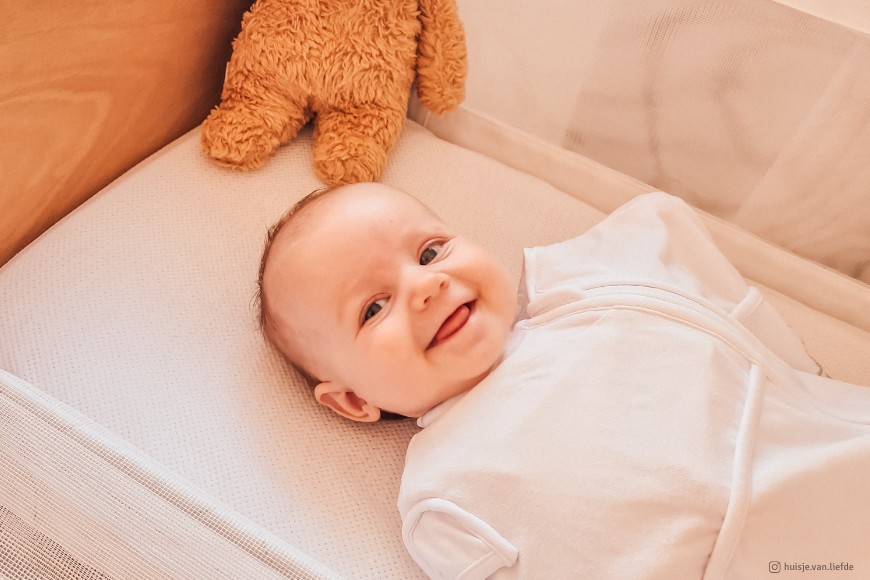

Effects of co-sleeping
On the child’s sleep
-
Improved sleep regulation
Co-sleeping can promote better sleep regulation in babies and young children. Young children may wake more often and learn to fall back asleep more easily thanks to the parent's presence and reassuring touch. -
Increased nocturnal wakefulness
Co-sleeping may result in the child waking more frequently at night as the child may seek comfort or parental presence between sleep cycles. This can be a challenge for parents who are dreaming of uninterrupted sleep. -
Dependence on co-sleeping
Co-sleeping can create a dependence on parental presence in order for the child to sleep. This may make it more challenging for children to sleep independently in their own bed or room at a later stage.
On the parents’ sleep
-
Ease of nighttime feedings
Co-sleeping can make nighttime feedings and comfort easier, especially for breastfeeding mothers. It reduces the need to get out of bed, making nighttime feedings more convenient. -
Disrupted sleep
Co-sleeping can disrupt parents' sleep due to the child's movements, noises or nighttime feedings. Parents may experience lighter and fragmented sleep, especially if the child is a restless sleeper. -
Improved sense of sleep satisfaction
Co-sleeping can lead to increased feelings of closeness and bonding between parent and child. Some parents find that the emotional benefits and increased physical contact outweigh potential sleep disturbance.
Co-sleeping may vary by culture and family and can be influenced by factors such as personal preferences, cultural norms and parents' views on bonding and nighttime parenting. Some parents choose to co-sleep because it may offer benefits such as improved bonding, convenience for nighttime feeding and ease of comforting the child at night.




